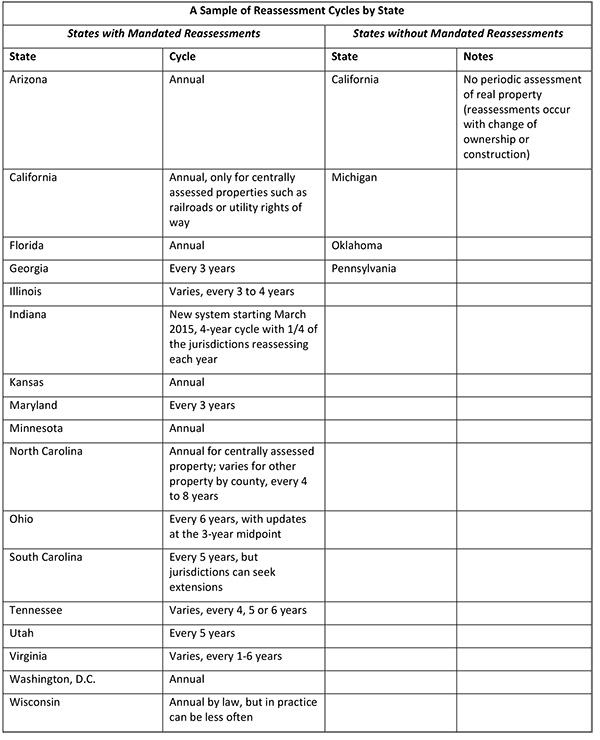"Michigan enacts historic personal property tax changes..."
Last week Michigan voters overwhelmingly approved Proposal 1. While Proposal 1's passage will significantly reduce or eliminate personal property taxes for many Michigan businesses, contrary to some articles, it will not eliminate Michigan personal property taxation. The program consists of a phase-out of the tax on certain industrial and industrial related personal property. In addition, there is an exemption for businesses with small amounts of personal property in a given locality.
"Small Business Exemption"
Starting in 2014, businesses with personal property having a true cash value of less than $80,000 in a particular assessing jurisdiction can claim a personal property exemption for that property. If a business or a related entity owned, leased or was in possession of personal property with a cumulative true cash value of $80,000 or more in that jurisdiction, then the full tax is owed. Under the plan, taxpayers must file an affidavit with the local assessor each year by February 10 to claim the exemption for personal property with a true cash value of less than $80,000. If the claim is based on a valuation method that differs from the State Tax Commission's valuation tables, then the claimant must explain the method used. However, if the required affidavit is filed, the taxpayer does not have to file a personal property statement for that tax year. Claimants are subject to audit and must maintain adequate records for at least 4 years from the year the exemption was claimed. If a claim for exemption is denied, then the taxpayer may appeal to the local Board of Review and then the Michigan Tax Tribunal.
Industrial Processing and Direct Integrated Support Equipment
In 2016, a phase out of the personal property tax on Industrial Processing and Direct Integrated Support Equipment will begin. This exempt equipment is referred to as Eligible Manufacturing Personal Property (EMPP). EMPP placed into service after December 31, 2012 will become exempt in 2016. Going forward, any EMPP in place for at least 10 years also will be exempt. As a result, in each tax year after 2016 a new vintage year of EMPP will become exempt until all EMPP is exempt by 2023.
The exemption could be determined on a parcel-by-parcel basis, or a group of contiguous parcels. If over 50% of the original cost of the personal property on a parcel or group of contiguous parcels is used in industrial processing or direct integrated support, then the whole parcel or group is exempt. Use in industrial processing is determined by whether the asset would qualify for the industrial processing exemption under the Michigan Sales/Use Tax Acts. Direct Integrated Support involves functions related to industrial processing including R&D, testing and quality control, engineering, as well as some warehousing and distribution activities.
Taxpayers will be requested to file a form in 2015 estimating the amount of personal property they plan to claim for exemption for the 2016 tax year. If that form is filed, then the taxpayer will only have to file for the exemption in the first year (not each subsequent year) and will not be required to file personal property tax returns on the exempt parcels.
State Essential Services Assessment
The plan also creates a State Essential Services Assessment (SESA) which begins in 2016. The SESA is a special assessment applied to EMPP and used to offset some of the revenues lost from the new exemption. Generally, the SESA will amount to about 20% of what the tax would be if the EMPP were not exempt. An electronic filing and full payment to the Department of Treasury will be due by September 15 of each year. If payment is not made by November 1, then the tax exemption will be revoked.
Other Exemptions
The plan also addresses EMPP that is already exempt under other statutory provisions, including PA 198 industrial abatements and PA 328 personal property exemptions. Exemption certificates under these acts for EMPP that were in place prior to 12/31/12 will be automatically extended to the year that the EMPP would otherwise become exempt. For example, a twelve year PA 198 abatement for EMPP that was set to expire on 12/30/13 will now be extended to 12/30/15. Such a PA 198 abatement would expire at the end of 2015, but the EMPP will become exempt in 2016 under the new law. Also, the SESA will apply to some EMPP that is subject to PA 198 or PA 328 depending on which exemption applies and the date the certificate became effective.
As Proposal 1 is implemented, undoubtedly there will be many questions and issues that arise.
If you would like further information about this client alert or any other tax appeals related issue, please contact:
Scott Aston
313.465.7206
saston@honigman.com
Sarah R. Belloli
313.465.7220
sbelloli@honigman.com
Mark A. Burstein
313.465.7322
mburstein@honigman.com
Jason S. Conti
313.465.7340
jconti@honigman.com
Aaron M. Fales
313.465.7210
afales@honigman.com
Carl W. Herstein
313.465.7440
churstein@honigman.com
Mark A. Hilpert
517.377.0727
mhilpert@honigman.com
Jeffrey A. Hyman
313.465.7422
jhyman@honigman.com
Leonard D. Kutschman
313.465.7202
lkutschman@honigman.com
Stewart L. Mandell
313.465.7420
slmandell@honigman.com
Steven P. Schneider
313.465.7544
sschneider@honigman.com
Michael B. Shapiro
313.465.7622
mshapiro@honigman.com
Daniel L. Stanley
517.377.0714
dstanley@honigman.com






















